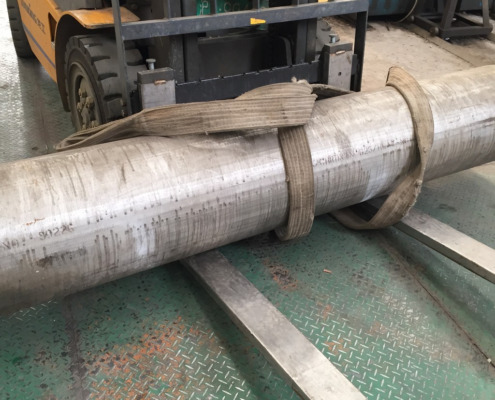What are the material properties of incoloy 800h?
Incoloy 800H Welding For 800 H/HT use below 787°C, and weld with wire 82 (ER NiCr-3). R A 330-04 (N08334) wire has a matching coefficient of thermal expansion and higher strength. If maximum mechanical strength is desired, it is best to use wire 617 (ERNiCrCoMo-1) or electrode 117 (ENiCrCoMo-1).
In order to avoid cracking at grain boundaries due to stress relaxation that may occur in 800H/HT welded parts above 538°C, a post-weld heat treatment is required at 899°C, with a holding time of one hour for every 25 mm of material thickness (at least half an hour/25 mm of thickness), followed by air-cooling.
The corrosion resistance of Incoloy 800H.
800H is resistant to many corrosive media. Its high nickel content gives it good resistance to stress corrosion cracking in aqueous corrosive conditions. The high chromium content gives it better resistance to pitting and crevice corrosion cracking. The alloy has good resistance to nitric and organic acid corrosion, but limited resistance to sulphuric and hydrochloric acids. There is good corrosion resistance in oxidizing and non-oxidizing salts, except in halides where pitting corrosion is possible. It also has good corrosion resistance in water, vapor, and mixtures of steam, air, and carbon dioxide.

Strengthening Mechanism of Incoloy800H Alloy
In order to achieve excellent corrosion resistance and mechanical properties of Incoloy 800H alloys, it is necessary to add a variety of alloying elements to improve the corrosion resistance of the alloy and strengthen the austenite matrix.
Solid Solution Strengthening
Solid solution strengthening of Incoloy800H alloy is to add Fe, Cr, and other alloying elements to the matrix to form single-phase austenite, and the atomic radius of these elements is different from that of Ni, which produces an aberrant stress field within the crystal, hindering the movement of dislocations, thereby increasing the strength of the alloy. Because Ni and Fe, Cr, and other elements can form an infinite solid solution, the austenite matrix can be solidly dissolved into a large number of Fe, and Cr elements without phase transition.
Precipitation strengthening
Precipitation strengthening in Incoloy800H alloy plays an important role, γ ‘phase is an important strengthening phase in Incoloy800H alloy, for the FCC structure, and the matrix is a co-grid relationship. In practice, Ti atoms in the γ’ phase often replace some of the Al atoms to form Ni3(Al, Ti) reinforced phase. Due to the low interfacial energy between this phase and the austenitic matrix, the γ’-strengthened phase usually maintains high organizational stability [26]. In addition, the γ’ phase is able to strengthen the austenitic matrix through its interaction with the dislocation motion of the Al and Ti contents and the effect of the solid solution treatment on the organization and properties of Incoloy800H alloys (bypassing and cutting particle mechanisms), while the inherent plasticity of the γ’ phase avoids the second phase from acting as a source of crack initiation.


